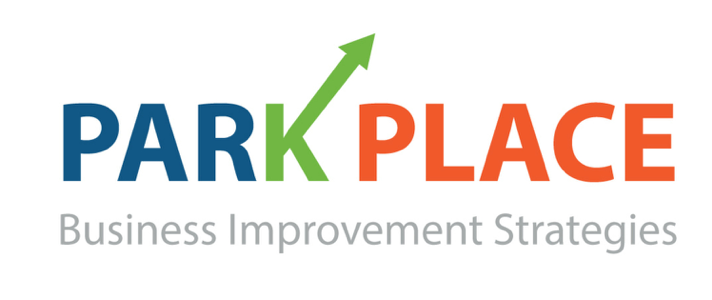Managing Cash Flow Step 1: Identify the Problem
WELCOME TO STEP 1 OF OUR CASH FLOW SERIES…
6 STEPS TO MANAGING CASH FLOW PROBLEMS
1. IDENTIFY THE REAL PROBLEM
2. ASK FOR PAYMENT SOONER RATHER THAN LATER
3. INVOICE MORE ACCURATELY, EARLIER AND/OR MORE OFTEN
4. MAKE IT FAST AND EASY FOR YOUR CLIENT TO PAY
5. COLLECT ON YOUR INVOICES
6. STAGGER YOUR MAJOR EXPENSES
1. IDENTIFY THE REAL PROBLEM
One of the keys to successfully solving any problem is to identify the root cause(s). Cash flow issues are rarely solved by going to the bank for a short term loan; looking deeper may well negate the need for a loan. For example, are your services priced appropriately? If you aren’t charging enough money for your work, without restructuring your pricing model, you will never experience positive cash flow. Similarly, if you don’t have enough clients, the fundamental problem is marketing, not cash flow procedures.
Let’s talk about the 2 big picture issues that may be negatively impacting cash flow:
PRICING & CLIENTS
DOES YOUR PRICING REALLY REFLECT YOUR COSTS?
Questions to ask:
How much are your monthly business expenses (including all standard overhead costs, office expenses, insurance, software and other technologies, marketing activities, other professional expenses, and general administration costs)?
How much do you need to make (salary + benefits) per year (after taxes)?
How much does the business need to make per year (after taxes) to cover all costs (including your salary)?
How many hours per week can you reasonably and consistently bill? This is your weekly billed hours goal.
Your cash flow strategy has to start with your pricing. Answer the questions above to determine if your pricing really reflects your costs, including your own pay. Are your expenses what you thought they were? Is the profit margin high enough?
Take a look at the simplified pricing model below to get a basic idea of where you stand pricing wise. If you are a sole practitioner, this should be very simple, but it can be just as simple for firms. Think of each attorney as a business unto themselves – because in many ways, that is exactly what they are.
The Pricing formula is this:
Desired annual income (adjusted up by 30% for taxes) plus annual expenses DIVIDED BY annual # of billed hours (adjusted for 2 weeks vacation) = Minimum Hourly Rate
As an example, let’s say:
· Take home income you need/want is $75,000 annually (plus 30% for taxes)
· A decent guess on expenses all in for an attorney and 1 support person is approximately $6000 a month (over 12 months is $72,000)
· It is reasonable to say that an attorney can have a billed hours goal of 25 hours per week (over 50 weeks is 1250 hours per year)
[{$75,000 / .7} + {$6,000 * 12}] / [25 * 50] = Minimum Hourly Rate
OR
[ $107,143 gross salary + 72,000 yearly expenses ] / 1250 hours per year =
$143.00 per hour
If this attorney is charging anything less than $150 an hour, they will never achieve positive cash flow. This holds true for sole practitioners and individual members of a firm. When a firm allows individual attorneys to charge too low an hourly rate, those attorneys will not be contributing to the firm’s profitability.
WE CAN HELP YOU RE-EVALUATE YOUR PRICING MODEL!
Free Consultation
No matter what challenges your business is facing, or will face in the future, we are always here to help with a free 1-hour consultation on a business topic of your choice.
Now that we’ve covered pricing,
let’s move on to the second big picture issue affecting cash flow success…
CLIENTS
DO YOU HAVE THE RIGHT NUMBER (AND KIND) OF CLIENTS?
Questions to ask:
What services are provided in a typical transaction or project?
How many hours do you spend on a typical transaction or project?
How many of those transactions or projects would you need to meet your billed hours goal?
Cash flow issue could be the result of an inadequate number of clients and/or an inadequate number of the right clients who need higher-dollar services. That indicates two problems with your marketing: You aren’t reaching enough people with your current marketing efforts, and you aren’t marketing directly to people who need the services you want to provide.
Those are marketing problems and before you address them you should have an idea of how many clients you would need over the year to make your minimum desired salary.
The Client formula for a Divorce Attorney may look something like this:
Typical Case: Contested Divorce
Hours spent on typical case = Approx. 50
Approx. 50 hours @ $150 = $7500 - $8000
Cases Needed to meet billed hours goal of 25 per week:
25 Contested Divorce Cases @ $150/hr for approx. 50 hours each =
$187,500 – 200,000 PER YEAR
Because 25 hours is the previously determined Billed Hours Goal, 50 hours equals 2 weeks of work. So our attorney would need 25 divorce clients each year to make what she wants to make.
Do the calculations based on your products and/or services. Do you have enough clients? If not, you have a marketing problem, not a cash flow problem.
Free Consultation
No matter what challenges your business is facing, or will face in the future, we are always here to help with a free 1-hour consultation on a business topic of your choice.
CASH FLOW BEST PRACTICES
Revisit pricing twice a year
Implement a strong marketing plan to bring in the right clients
Ask for & collect payment as close to the time the service is performed as possible
Secure a retainer when appropriate
Track your time hourly
Compile time weekly, include information about what is ready to be invoiced
Invoice once a week
Make it fast & easy for clients to pay by utilizing appropriate electronic tools
Manage A/R weekly with a simple collections plan
Create an expense payment plan that fits with the ebb and flow of your income


